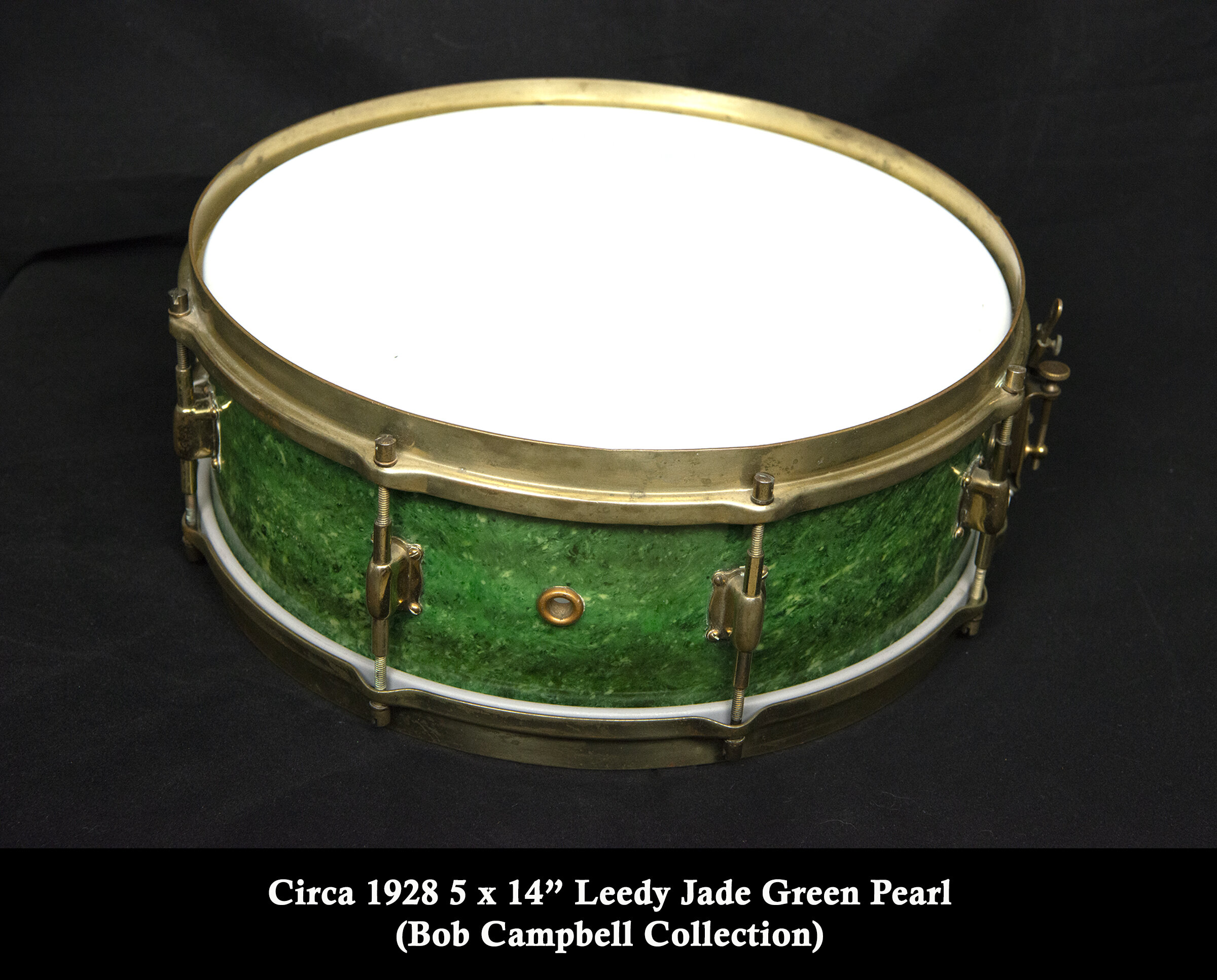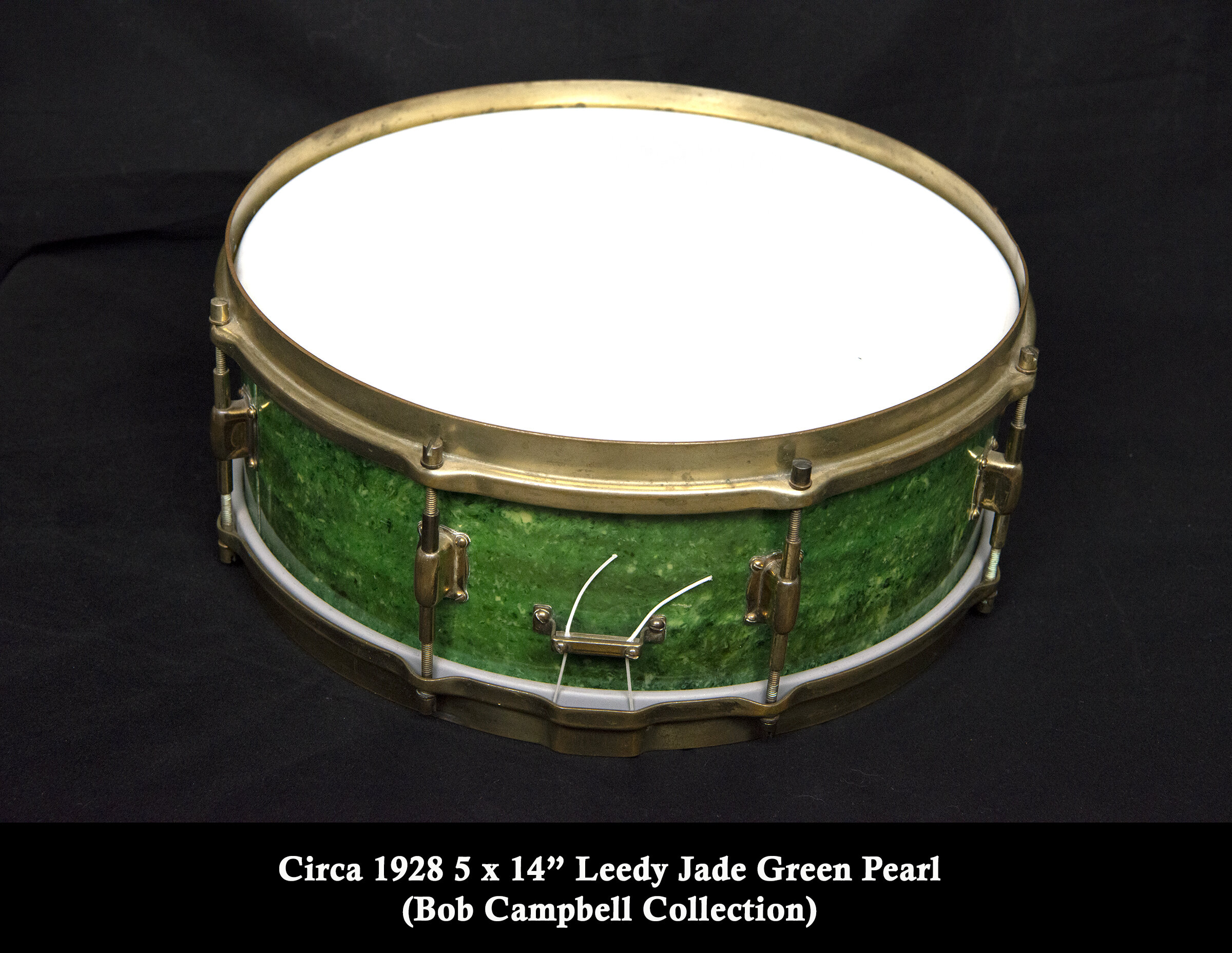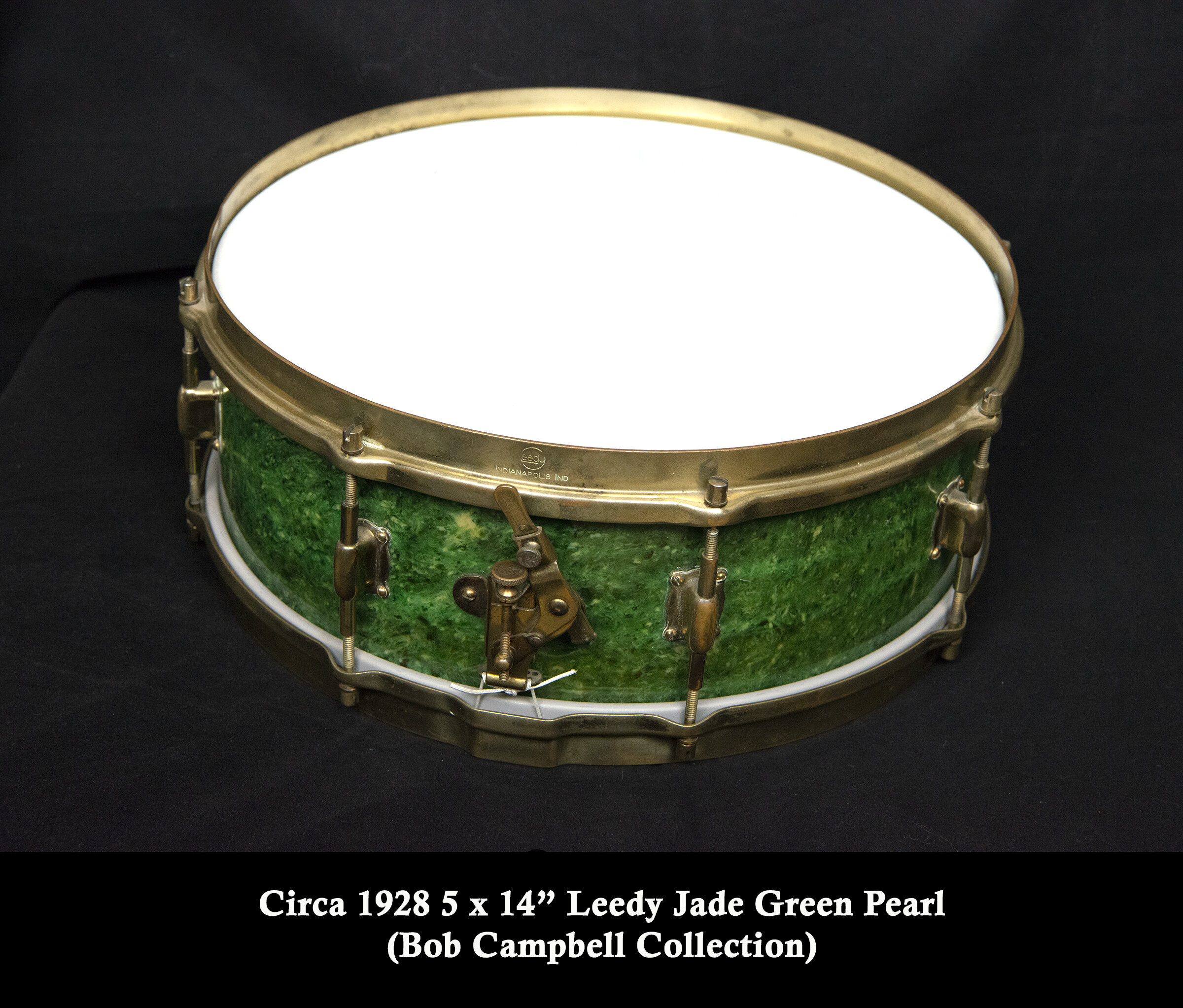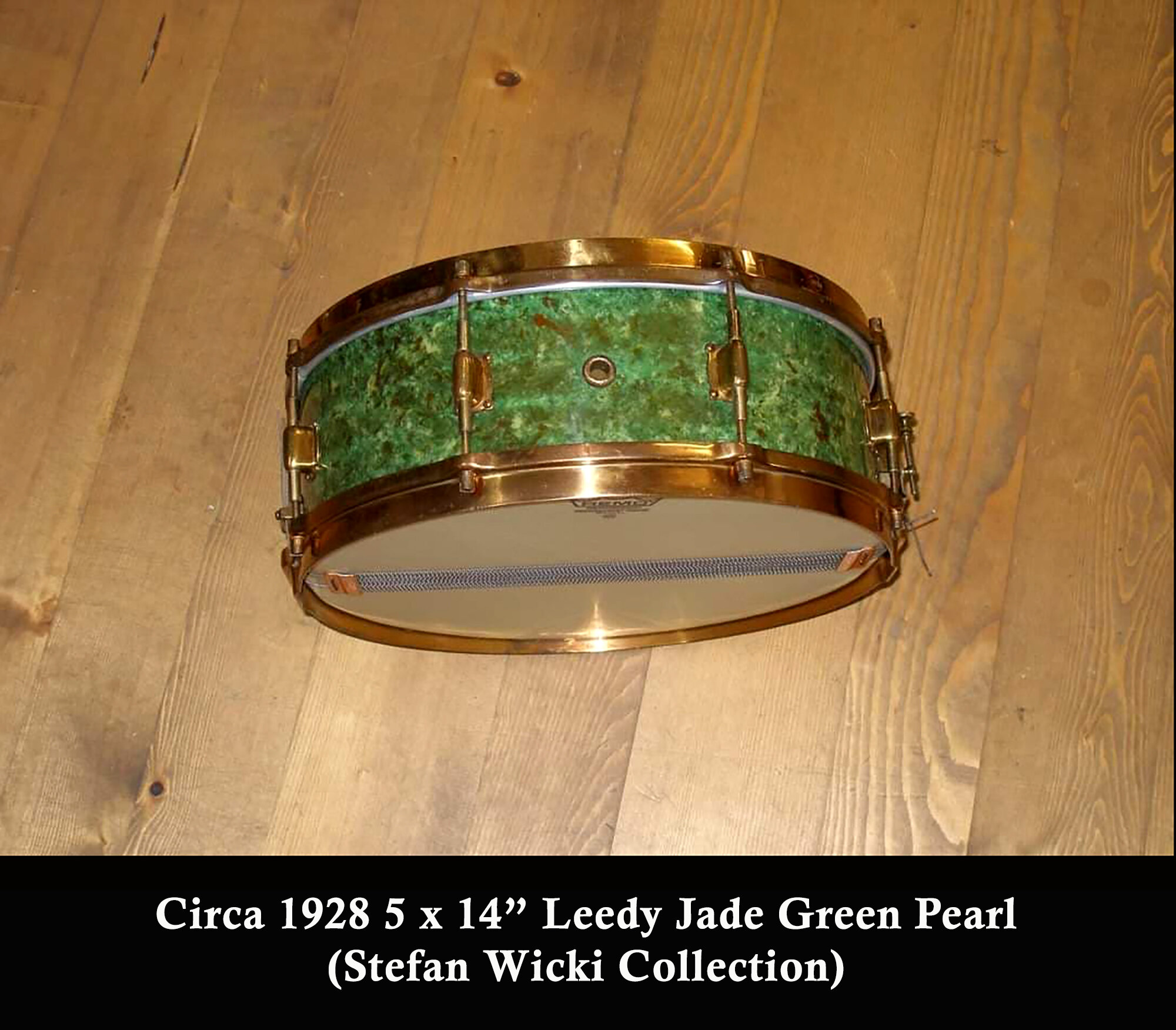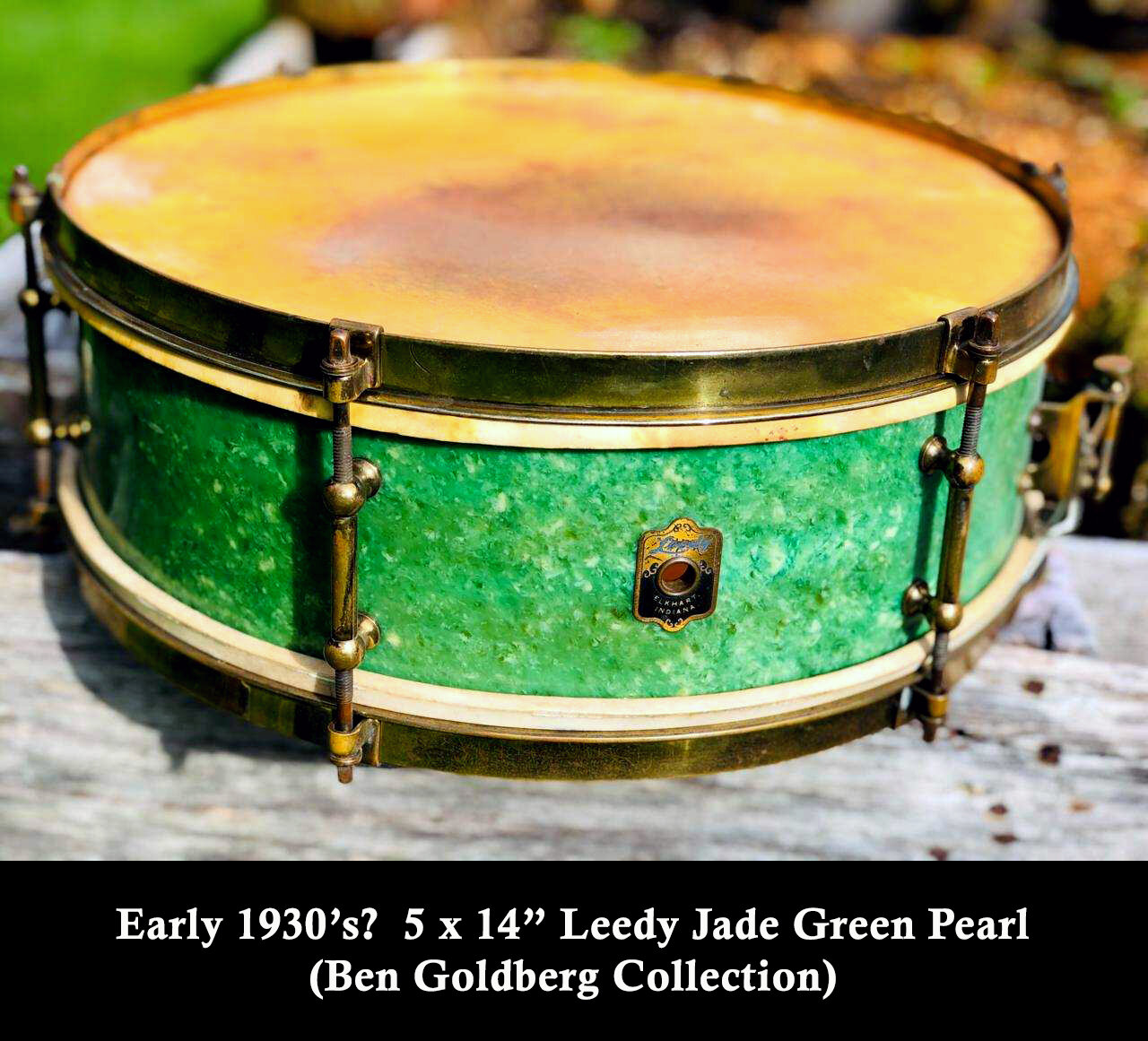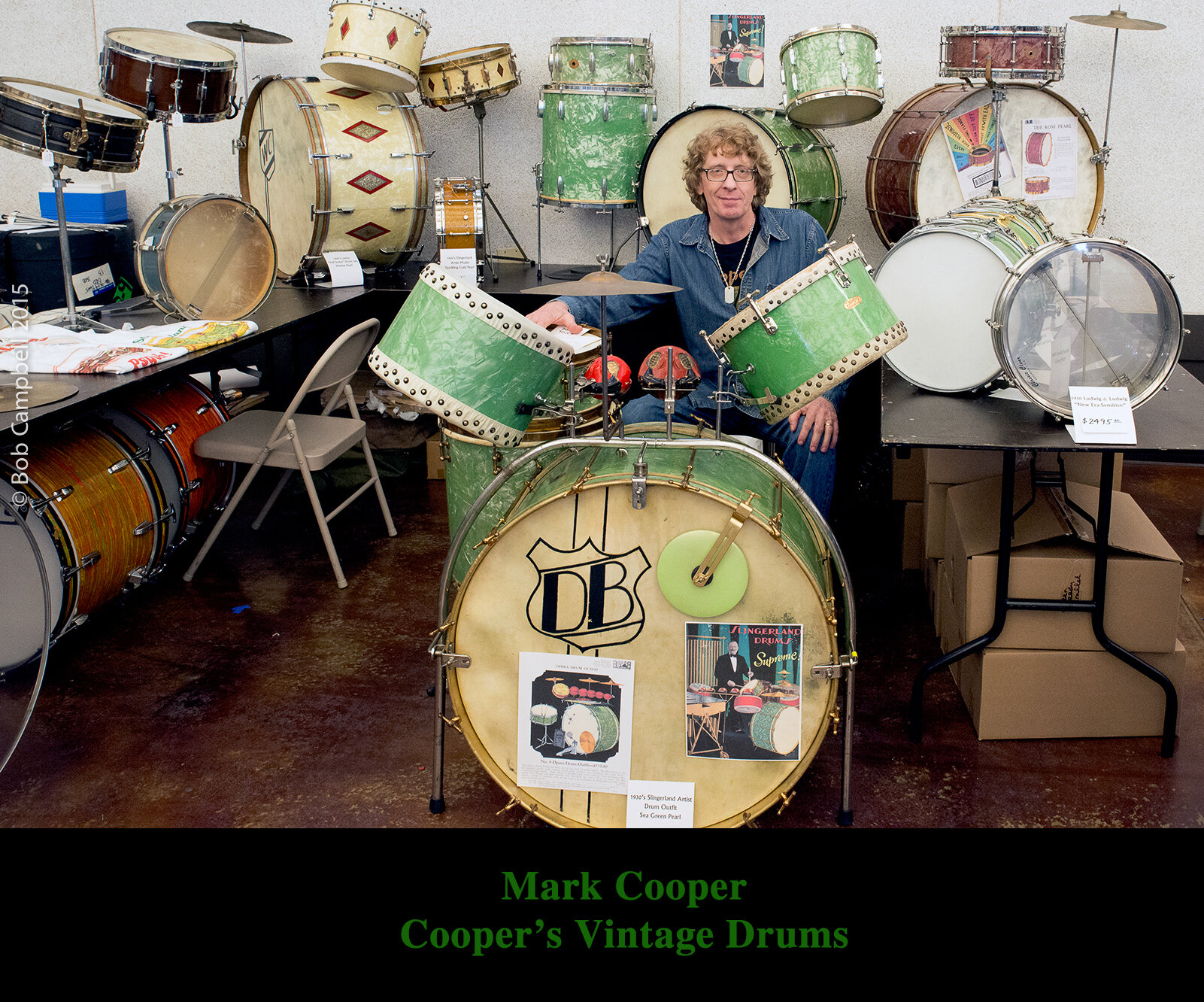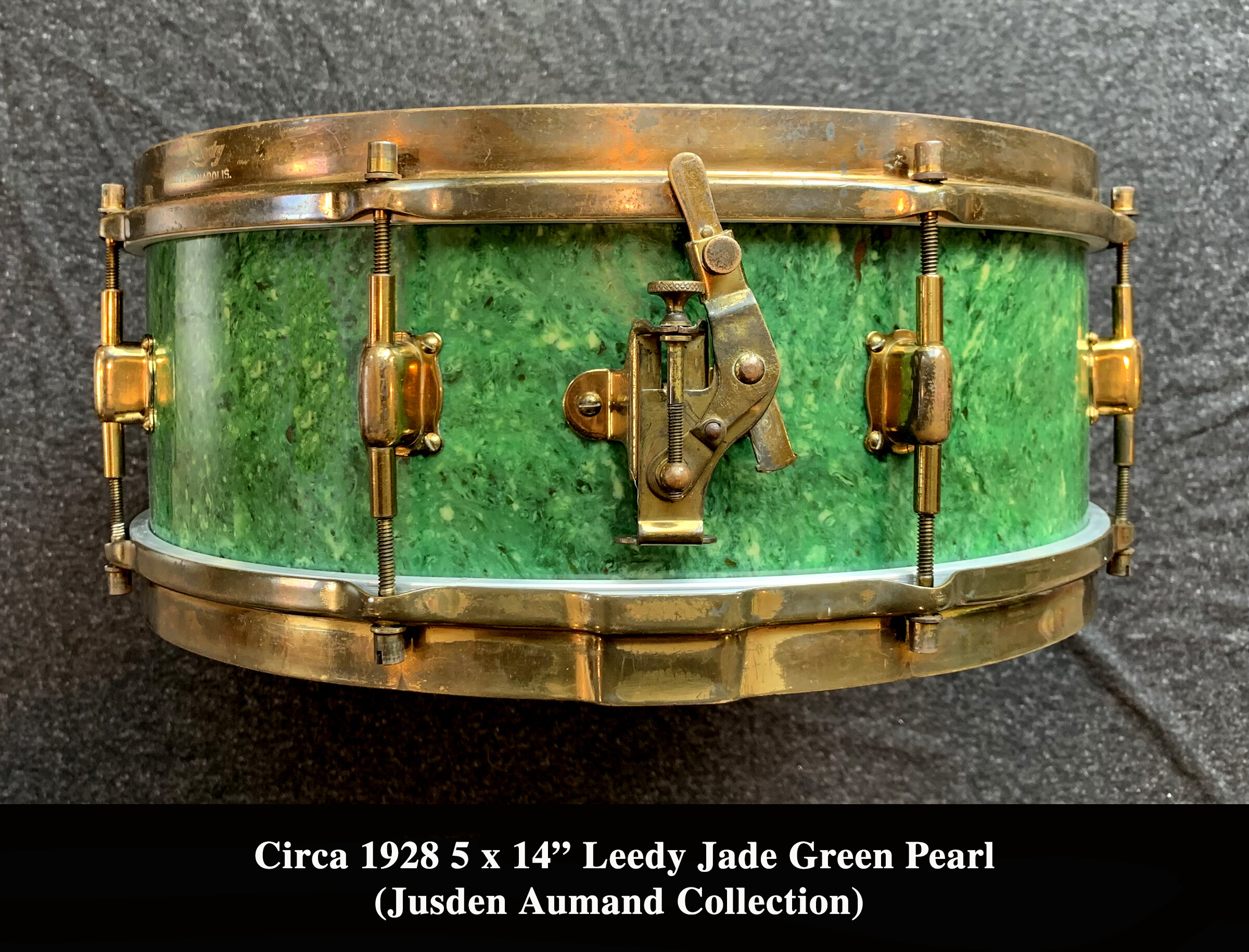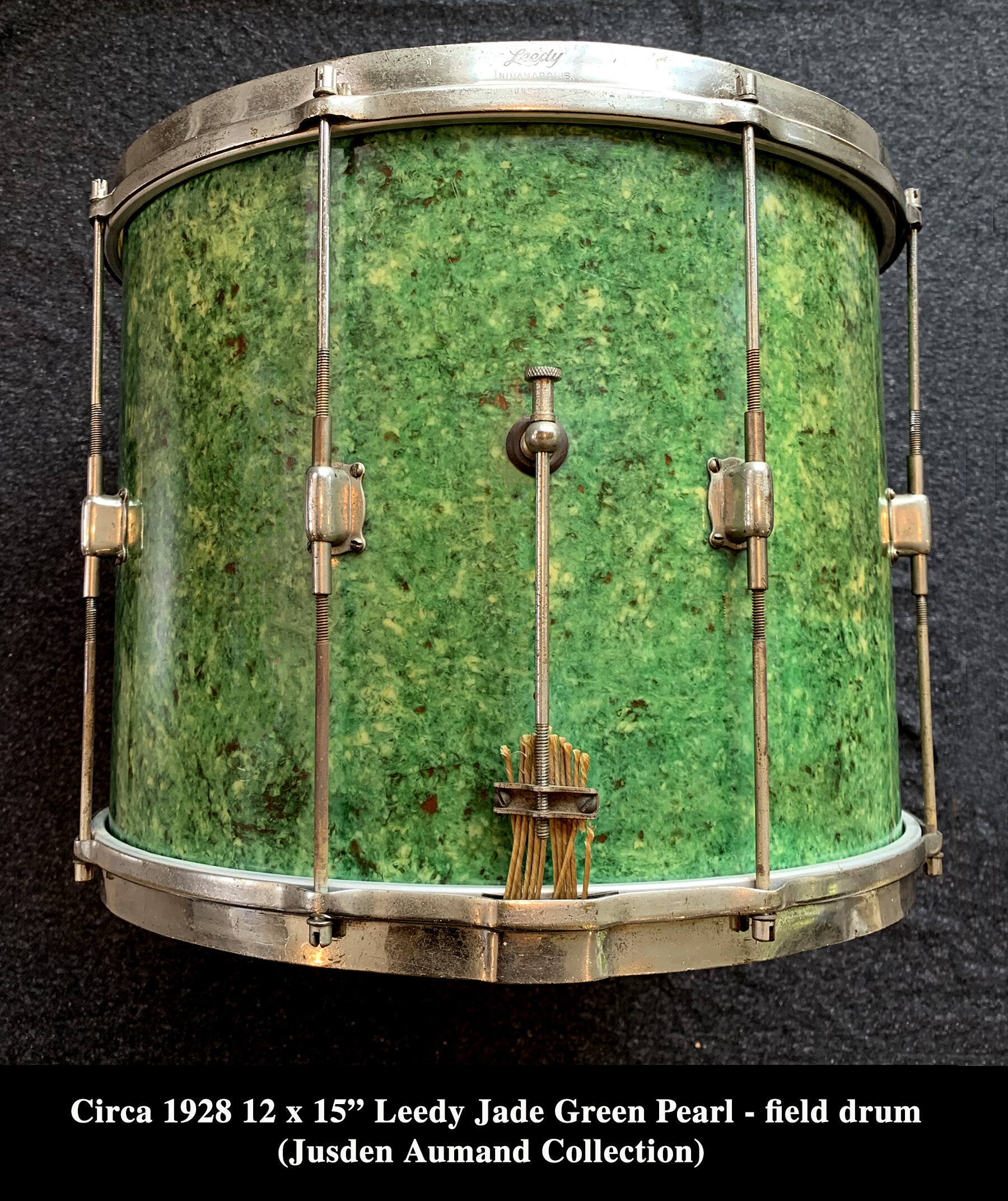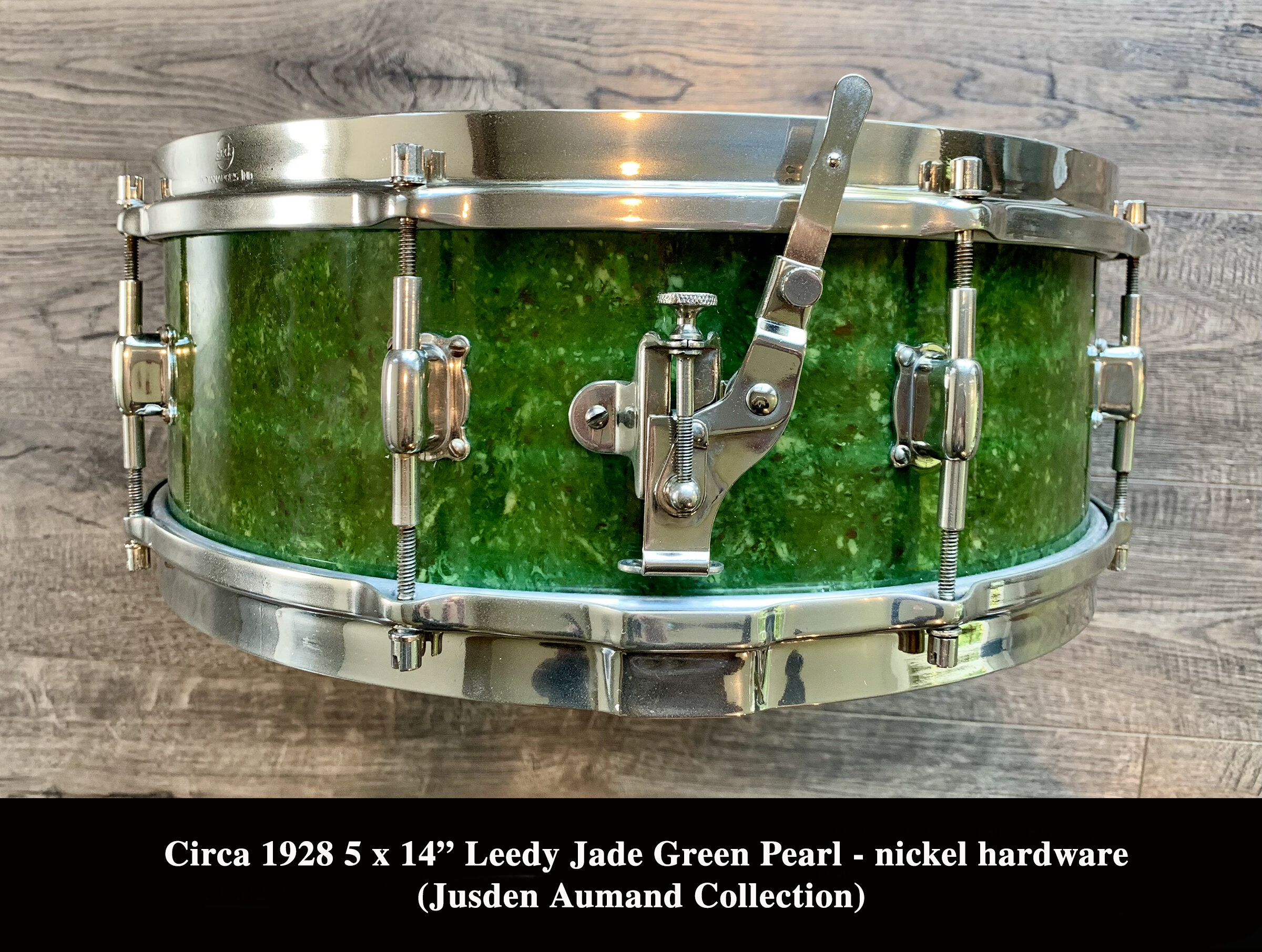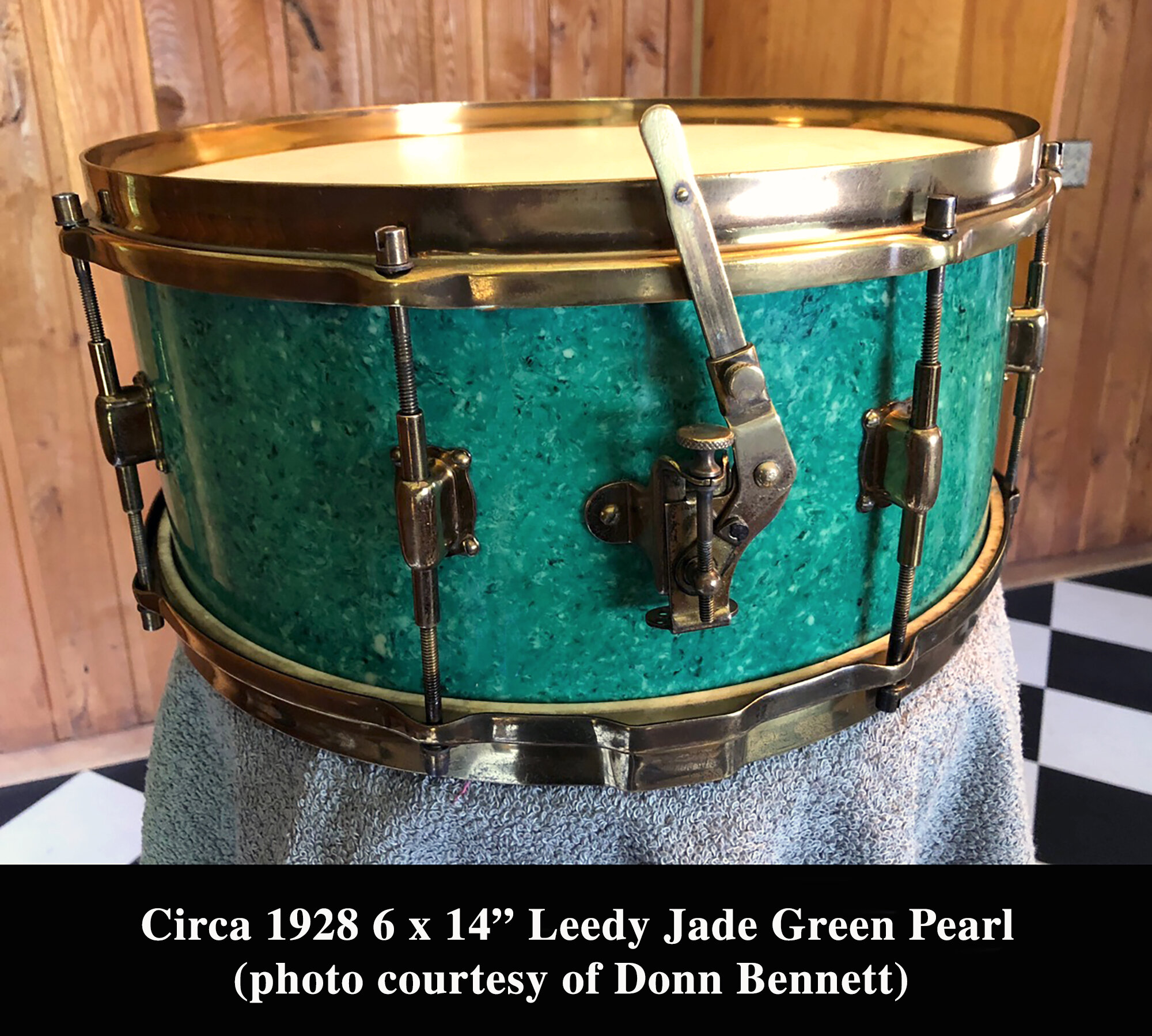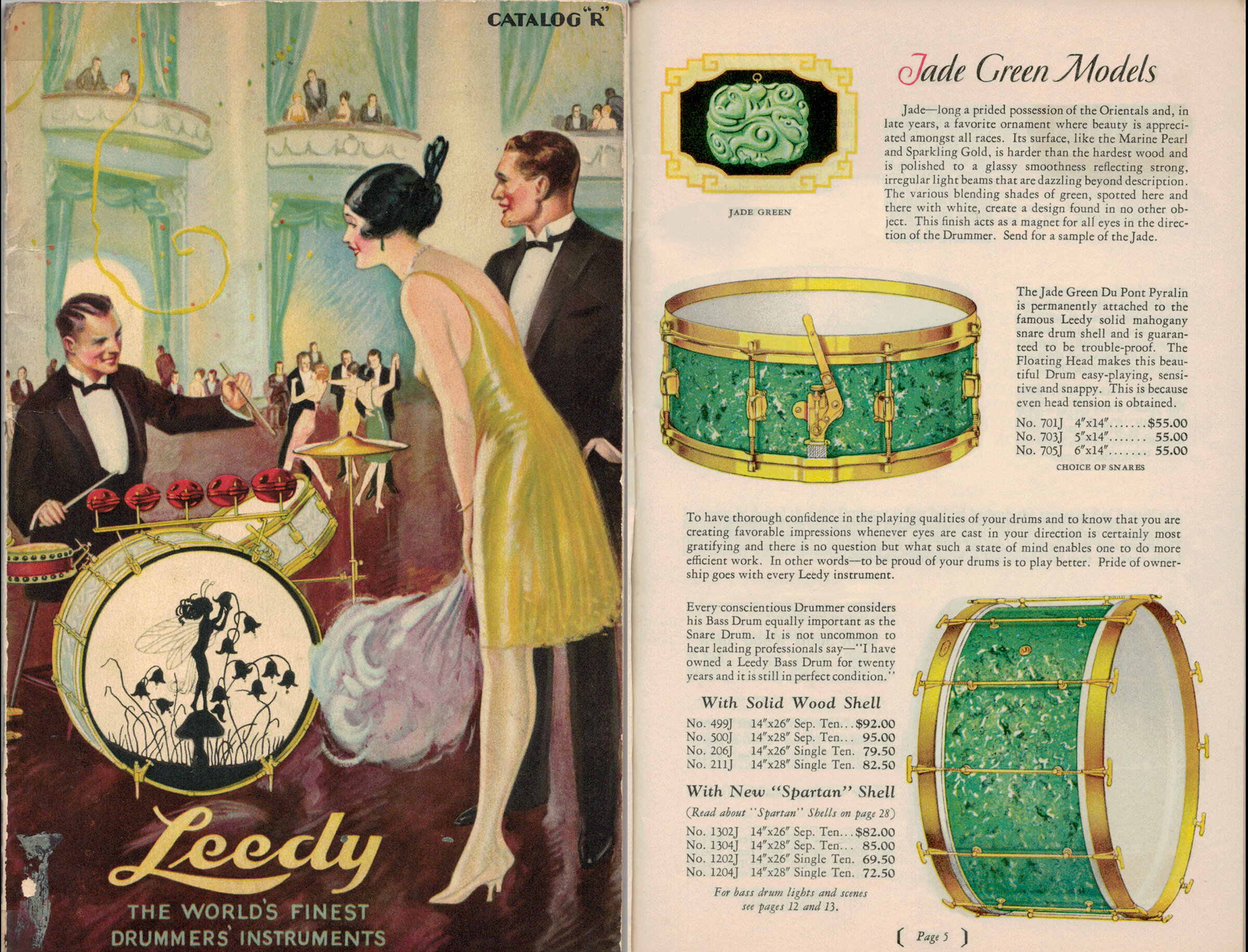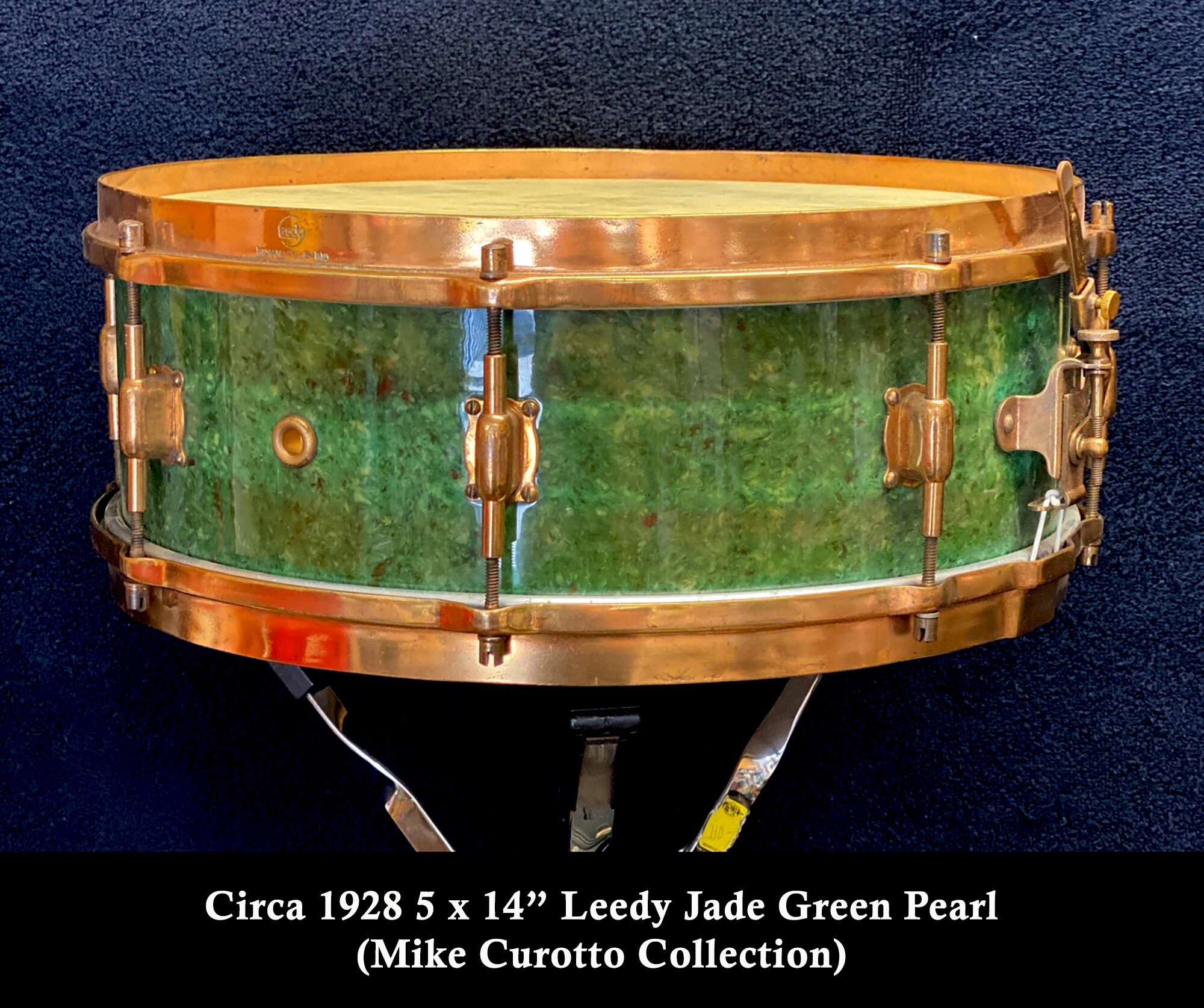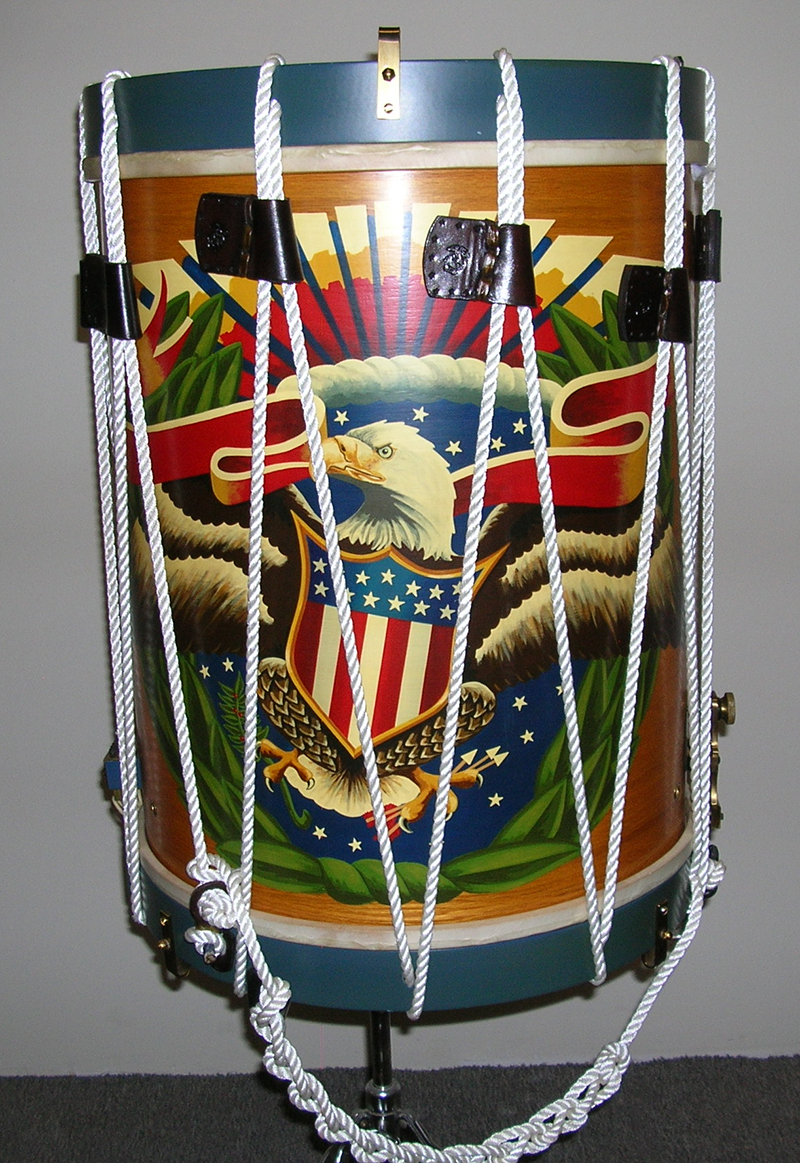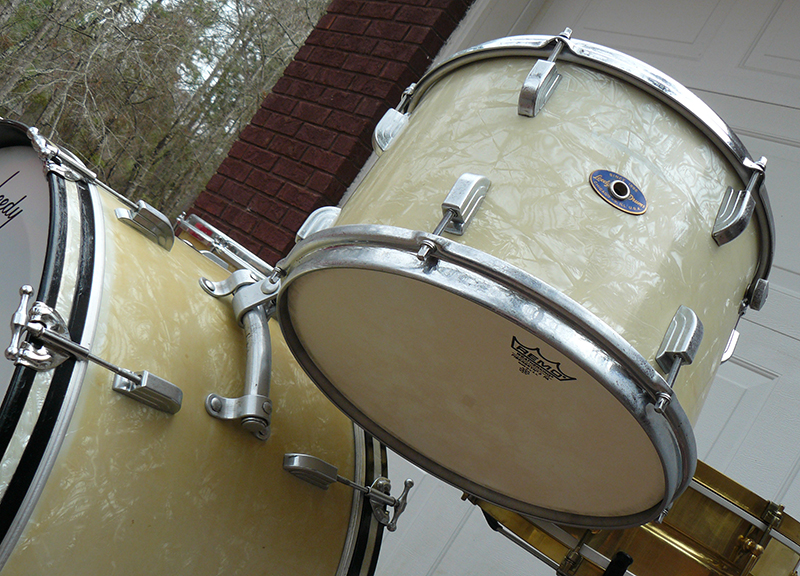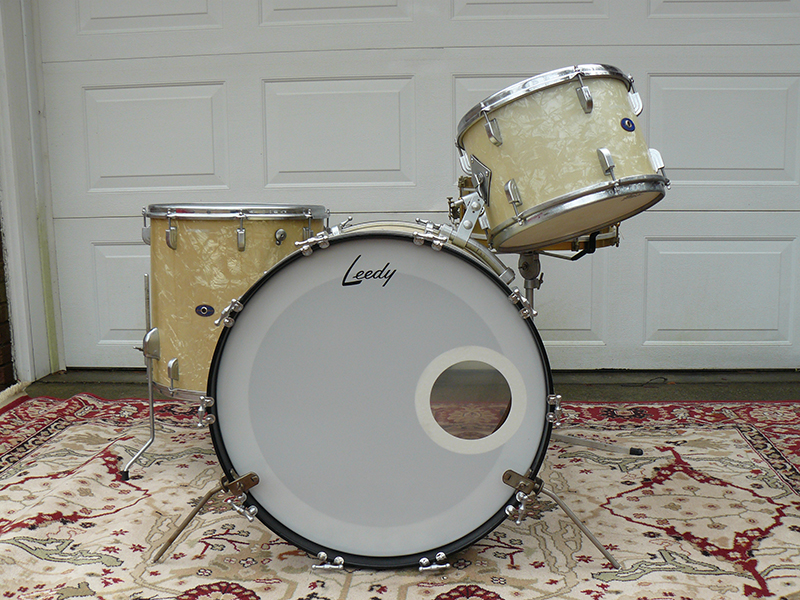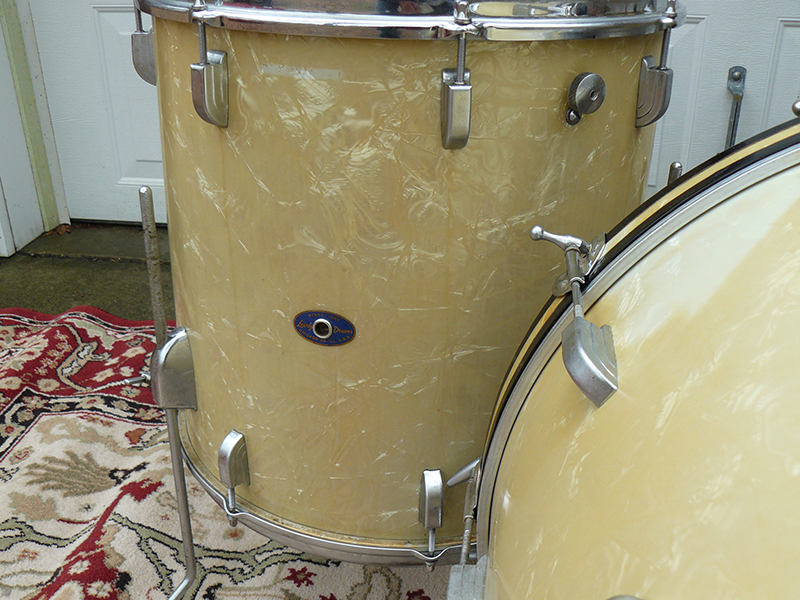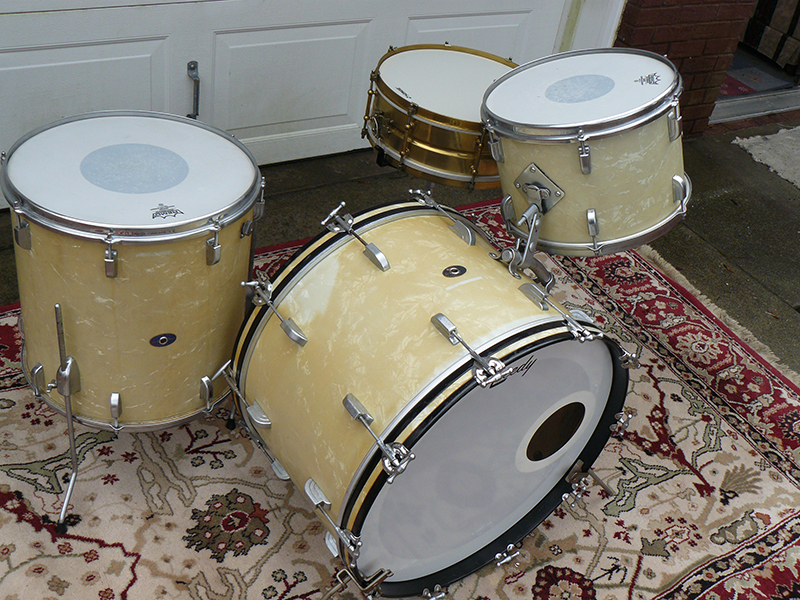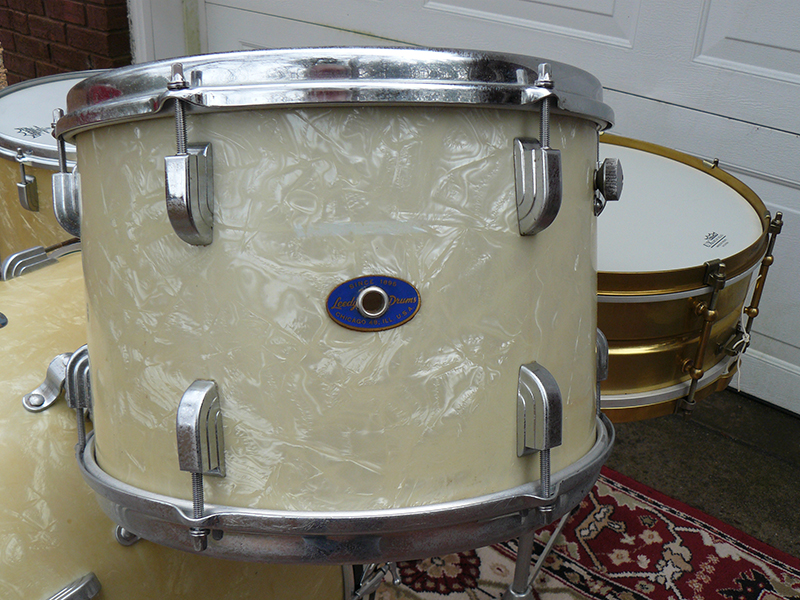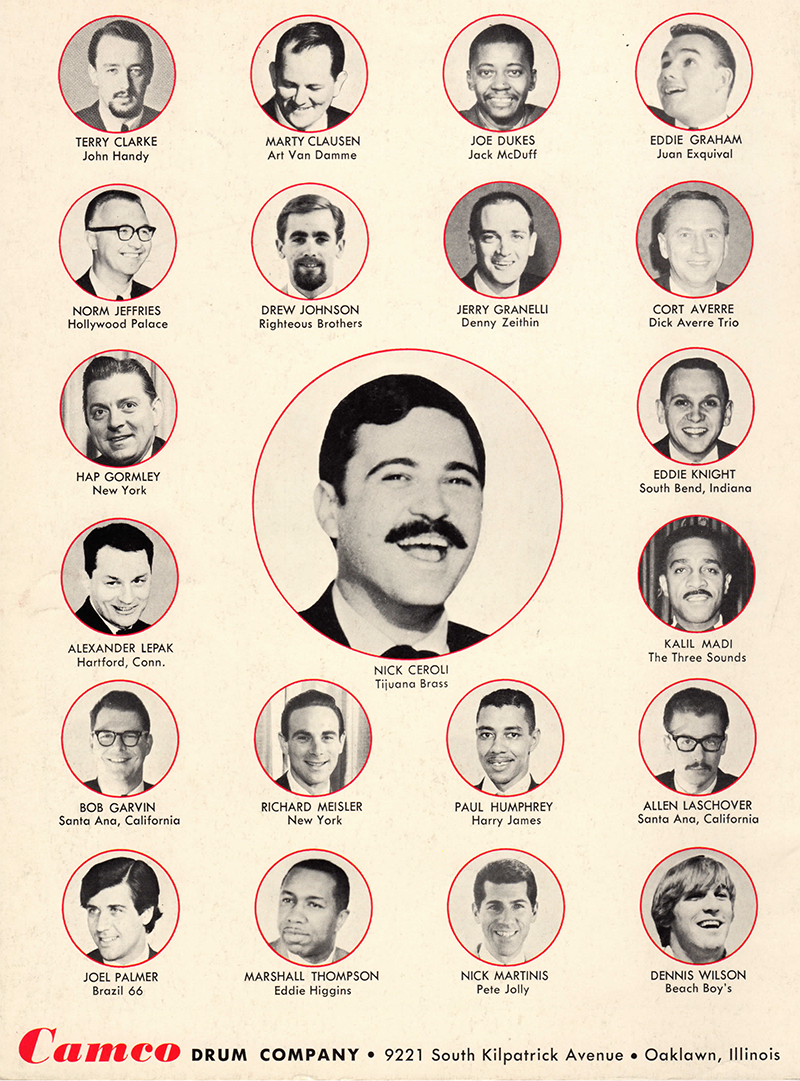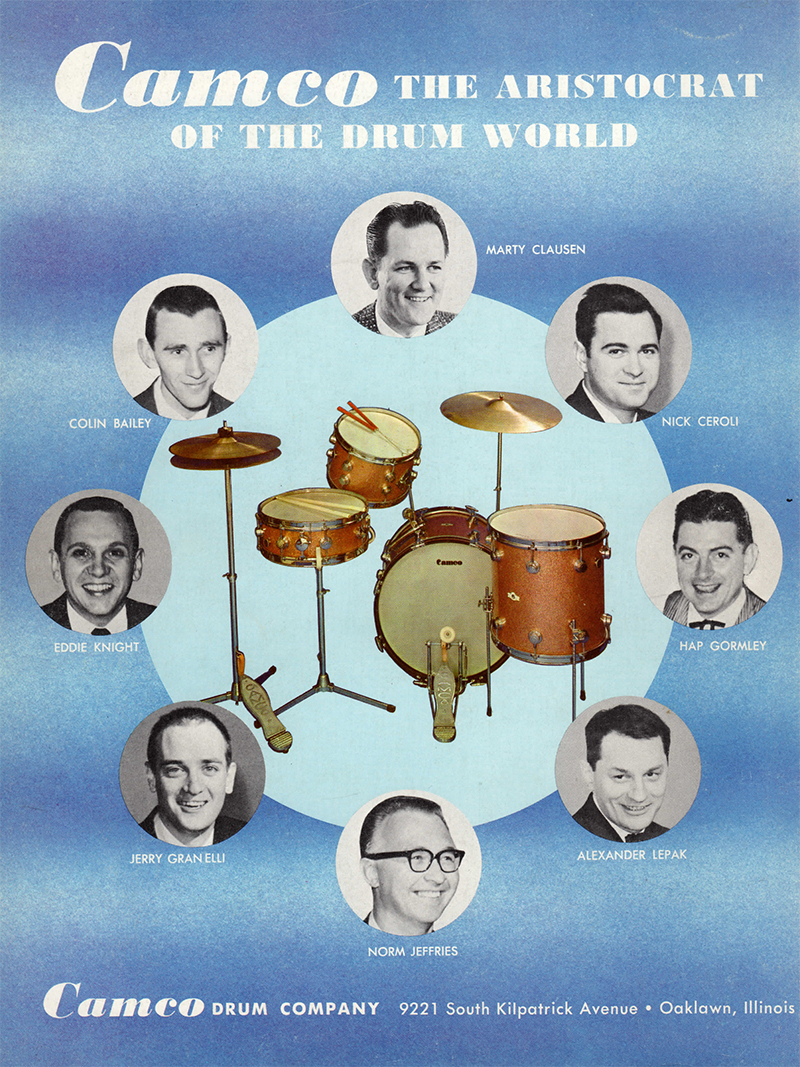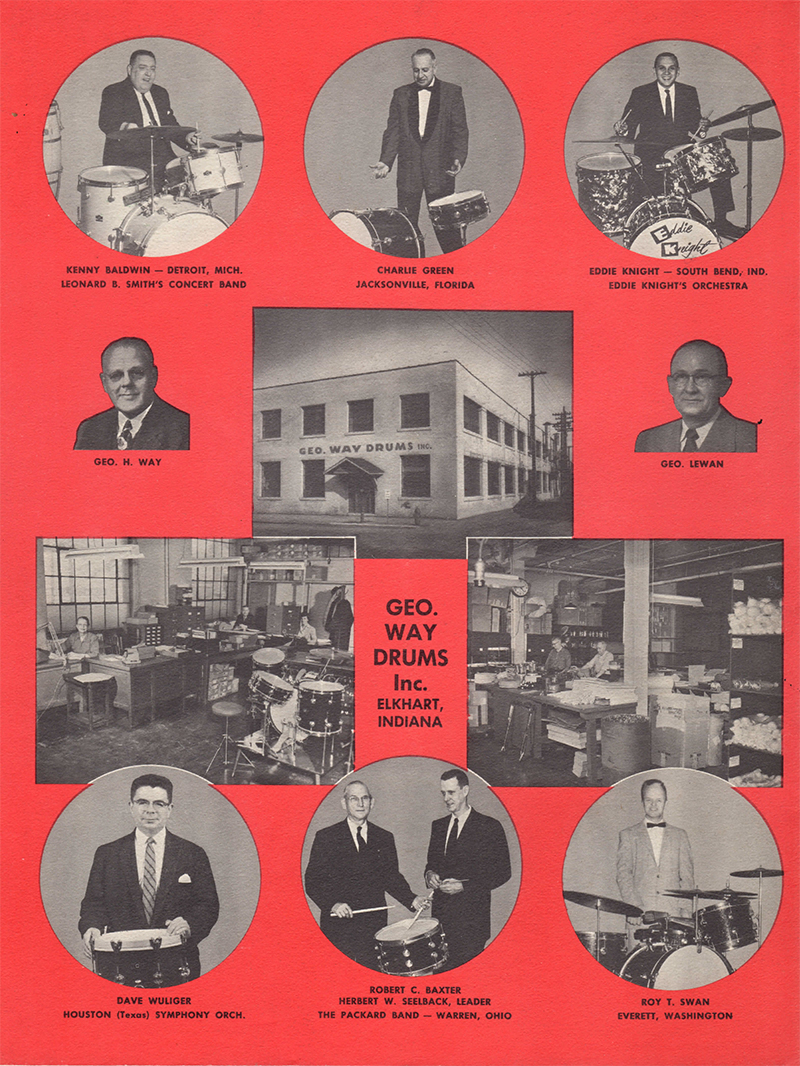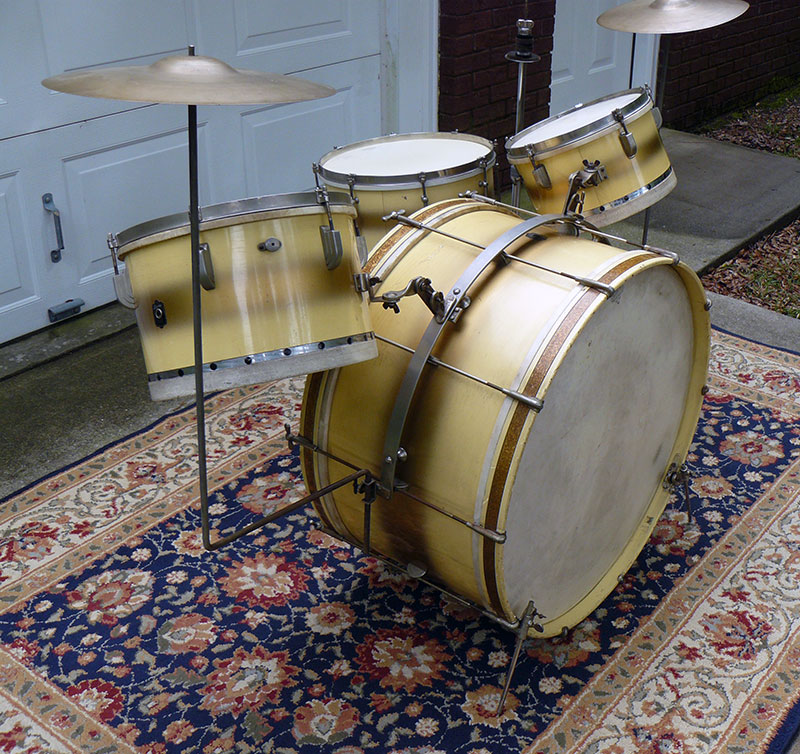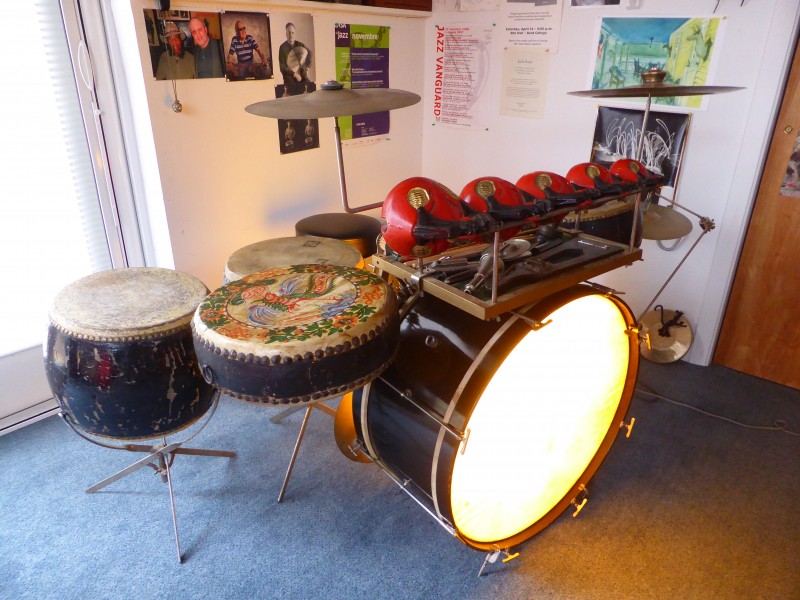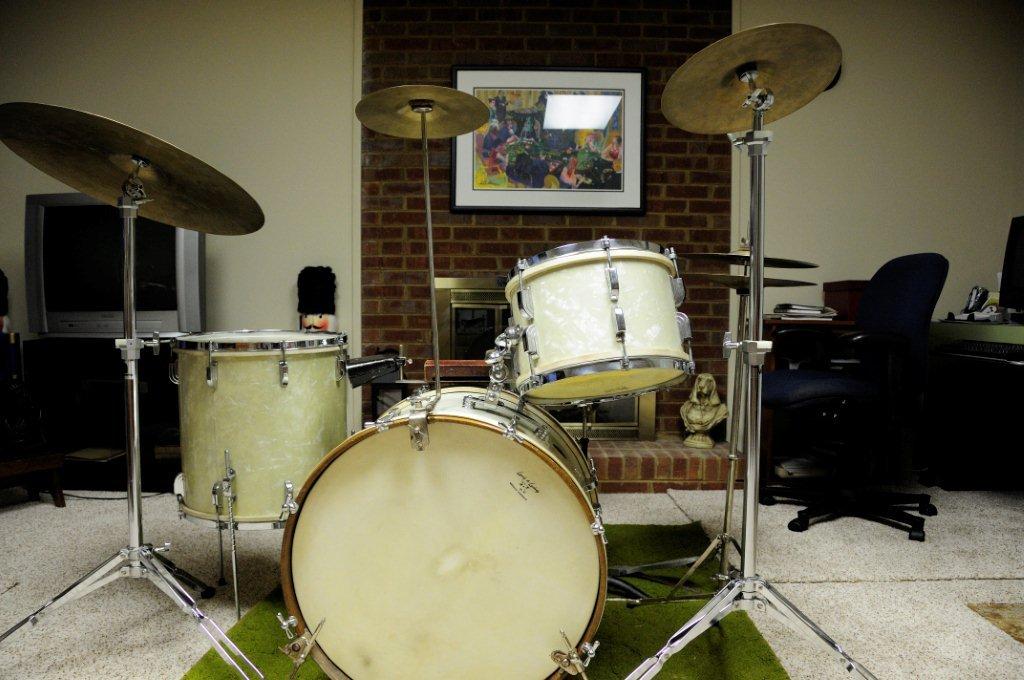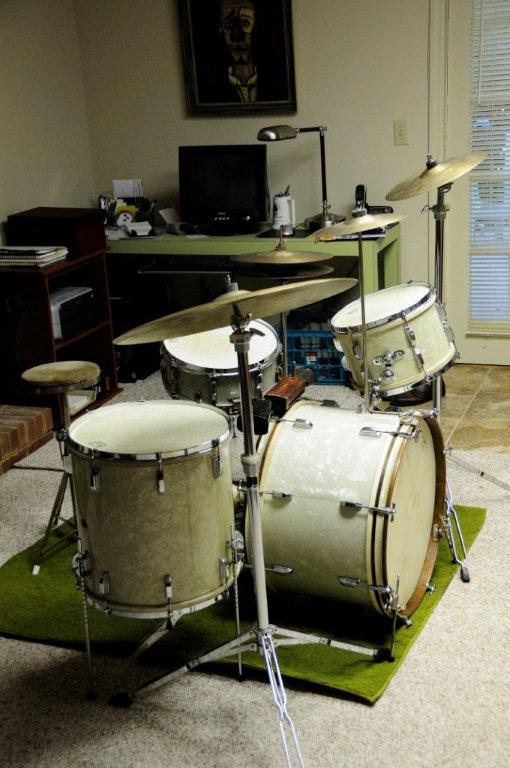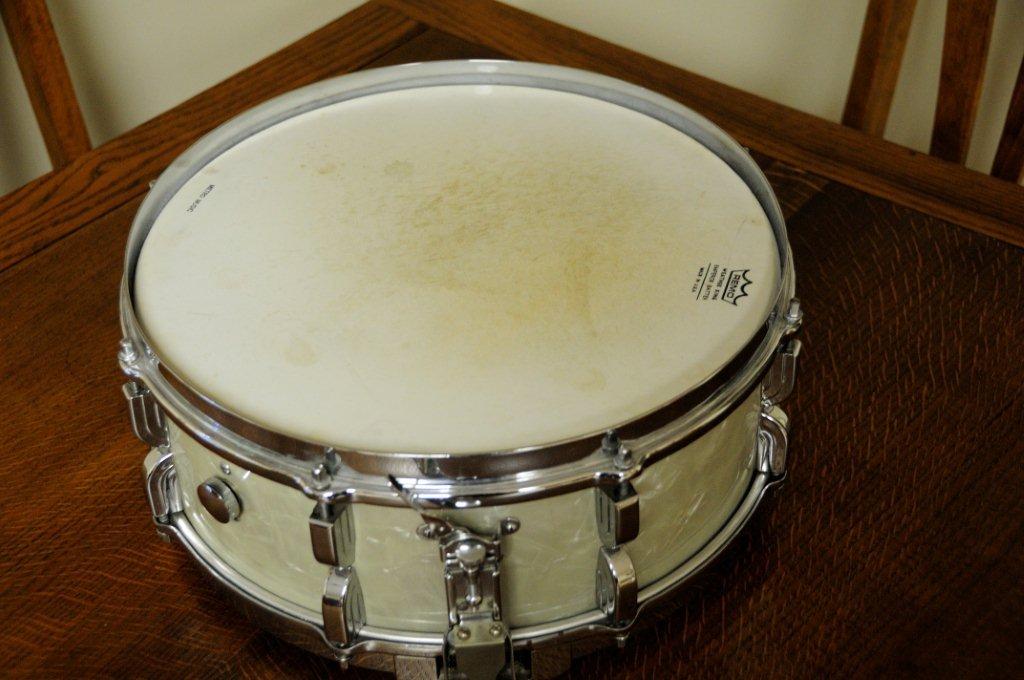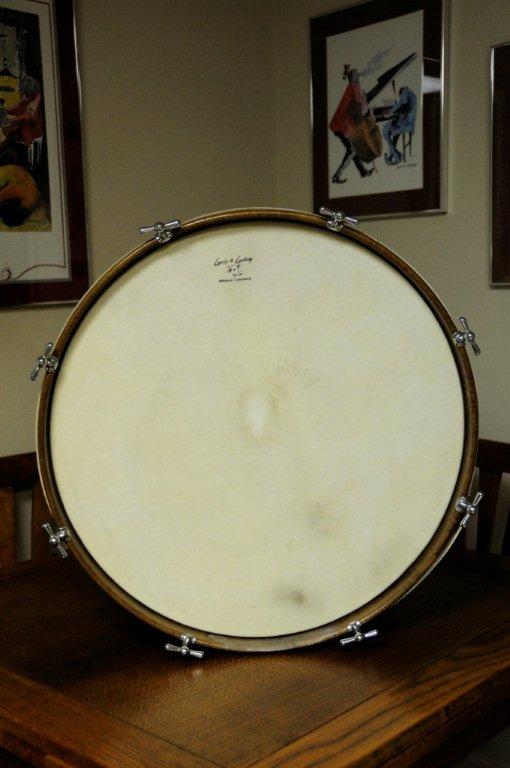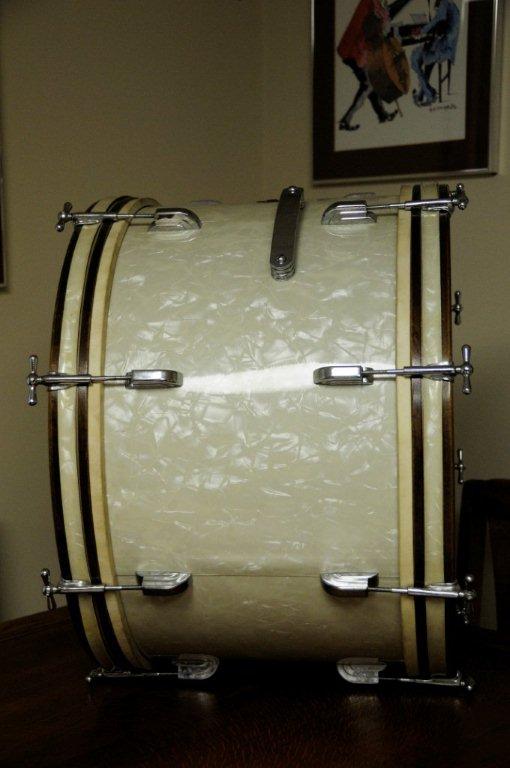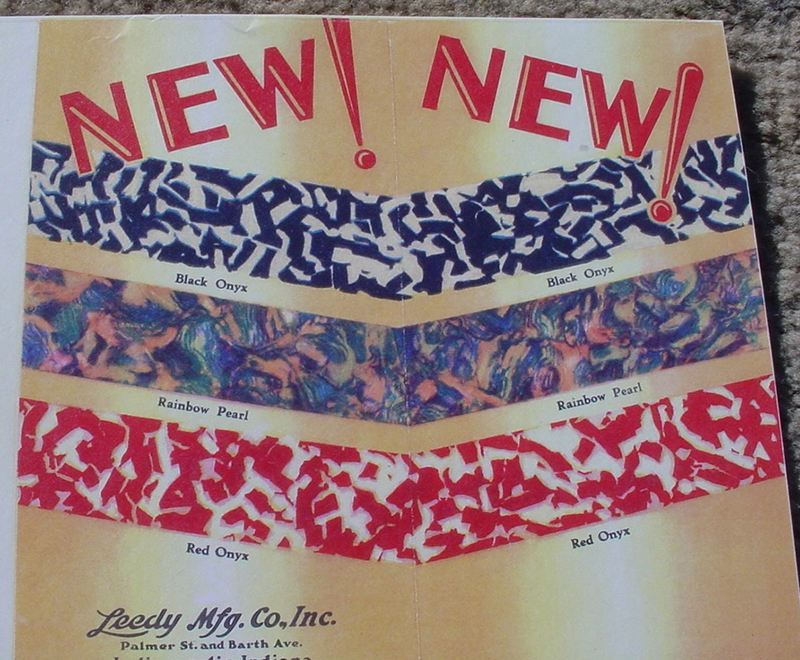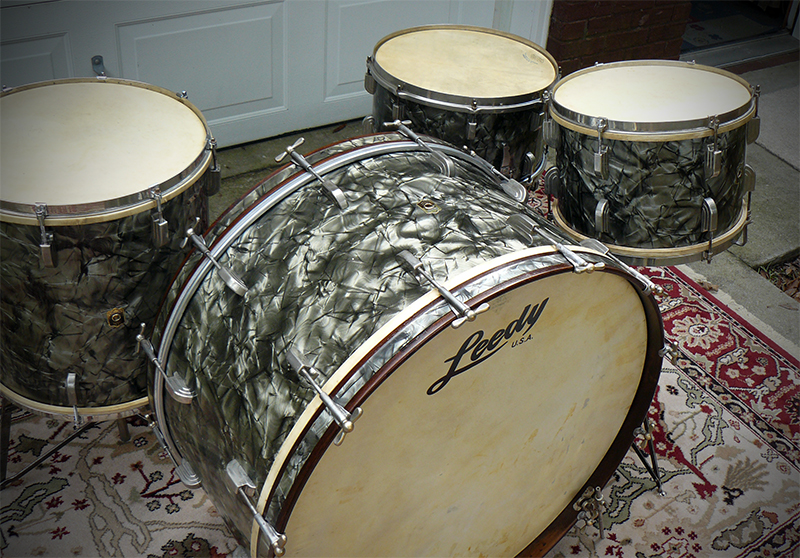Yes, I saw great drums, but for this piece, I will stay on topic. Eddie pulled out four leather bound Leedy catalogs – F & G. So we talked, prior to World War I.
Two of the catalogs had the gold embossed name of “U.G. Leedy” (the much revered president), one had the name “Alfred Kuerst”. Al, as he was known, was the VP of Leedy, really the second in command. Before George Way got there, Al was the guy quoted in trade magazines. He was also very popular because he paid each employee his/her wages in cash every week. The fourth catalog read “order clerk.”
So, these were the books taken to music stores and trade shows. The covers are permanent – the catalogs do not slip and out. This is what I came to see and they were just the start!
Somehow George Way got these special catalogs and his widow, Elsie, gave everything to Eddie over 40 years ago. Eddie had been a protégé of George, and George called him “Be-Bop”.
Well, Be-Bop has some other catalog treasures B and C and other Leedy catalogs. And every one I saw looked brand new. Leedy’s first catalog was not branded with a letter. It has the Cyclorama address in it, so that makes it before 1903. Therefore “B” has to have been published no sooner than 1904. And it looks new - uncreased, no spots, no loose pages, no cuts. Damn!
Eddie has boxes of his catalogs with many of them in plastic. We need an archivist, please!
I had a great albeit brief visit with Eddie who has taught drummers for 50 years. I’d like to go back, shoot the breeze and breathe the air.
His catalog collection is superb and while it was U.G. Leedy that got me there, it was Eddie Knight who kept me in riveted attention.
I never would have guessed we have a rival to the Library of Congress in downtown South Bend, Indiana.
